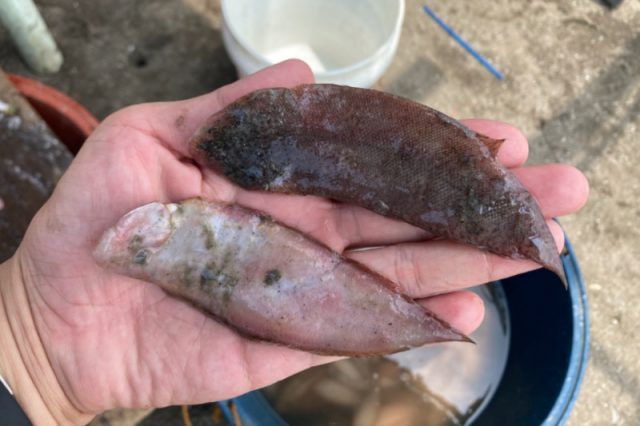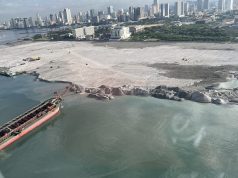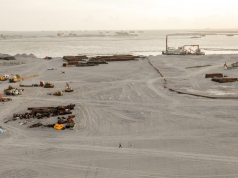
The word “tampalpuke” once again gained buzz on social media after fishermen reportedly spotted several flatfish bearing this name in Cavite.
It previously became a buzzword after Eva Le Queen introduced the fish in an episode of season one of “Drag Race Philippines” last year.
Eva’s fans were then given the nickname “tampalpukeans.”
“Tampalpuke” was being talked about again online last week. The fisher group Pamalakaya Pilipinas reported on Twitter that a lot of these fishes were observed surfacing due to dredging activities in Manila Bay.
The group also posted photos of them, which are also locally known as “isdang dapa,” on Twitter on June 16.
LOOK | Local fishers observed the surfacing of this type of flounder/flat fish, locally known as ‘tampal-puke’ or ‘isdang dapa’.
‘Tampal-puke’ are said to be being driven away from the seafloor because of the ongoing dredging in Manila Bay. pic.twitter.com/2ynz1tqm1U
— Pamalakaya Pilipinas (@pama_pil) June 16, 2023
Pamalakaya said that flatfishes were spotted by fishermen in Noveleta, Cavite.
Rare ‘tampalpuke’
In the episode of “DRPH” Season 1, Eva introduced “tampalpuke” to drag race viewers as the term used by residents of Cavite to refer to flounder fish. She cited the character “Flounder” in Disney’s “The Little Mermaid.”
This moment was part of her hilarious act as Rufa Mae Quinto in the Snatch Game, one of the popular challenges of the “RuPaul’s Drag Race” franchise.
RELATED: Eva Le Queen launches ‘Tampal Puso’ donation drive to gift children this Christmas | ‘Drag Race PH’ finalist Eva Le Queen voices need for medical insurance for drag, freelance artists
While the word might seem lewd to some Filipinos, “tampalpuke” is well-known in the fishing communities of Cavite.
In a report by One PH, a flatfish was shown to have flat, shiny and pink-like scales. It is also a bit bleached on one side and dark on the other.
Schools of flatfish do not often come up to the surface of seawater. They stay on the seafloor and are surrounded by sand and seagrass.
It is, therefore, rare to find this type of fish being sold in the market, the report said.
National Geographic also described a flatfish as its name suggests, wherein “fish with thin, oval or diamond-shaped bodies that lie flat on the seafloor.”
Commercial flatfish include halibut, flounder, sole and turbot.
Moreover, there are also 822 known species of this seawater creature.
“Flatfish range in color from a speckled brown, black, and beige, like a black sea turbot; or spotted, like the blue-and-yellow peacock flounder. Most species live in highly diverse tropical and subtropical oceans,” National Geographic said.
Of the known species, 120 of them are listed as threatened, according to the International Union for the Conservation of Nature.
The dredging activities
In an interview with One PH, Fernando Hicap, chairman of Pamalakaya, deemed the flatfish’s surfacing as unusual behavior.
“Ang tirahan niyan ay sa mga maraming seagrasses tapos yung mejo mabuhangin at maraming mga corals,” Hicap said.
“[Yung] dahilan ng paglutang nila sa ibabaw ay kakaiba talaga. Hindi yung natural behavior ng tampalpuke,” he added.
In a statement, Pamalakaya said that this phenomenon might be due to the dredging activities at the bay.
“‘Tampal-puke’ is said to be being driven away from the seafloor because of the ongoing dredging in Manila Bay,” the group said.
“Small fishers have been fighting the dredging and reclamation projects in Manila Bay. The dredging activities resulted in the drastic decline of fish catch and other ecological damages,” they added.









